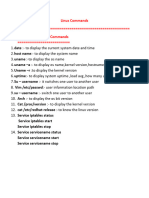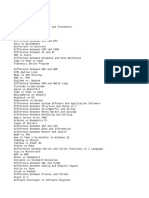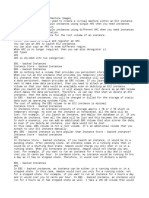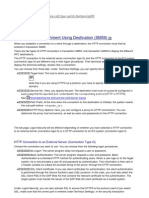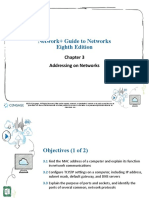0% found this document useful (0 votes)
44 views2 pagesLinux Interview Questions
The document compares grep, egrep, and fgrep commands. Grep uses basic regular expressions while egrep uses extended regular expressions. Fgrep is used to find fixed strings and is equivalent to grep -F. The document also provides information on IP addresses, DNS, gateways, subnet masks, and the resolv.conf file. It discusses the useradd, adduser, and newusers commands for adding users. Finally, it briefly describes the nslookup and dig commands for DNS lookups and information retrieval.
Uploaded by
BharathCopyright
© © All Rights Reserved
We take content rights seriously. If you suspect this is your content, claim it here.
Available Formats
Download as TXT, PDF, TXT or read online on Scribd
0% found this document useful (0 votes)
44 views2 pagesLinux Interview Questions
The document compares grep, egrep, and fgrep commands. Grep uses basic regular expressions while egrep uses extended regular expressions. Fgrep is used to find fixed strings and is equivalent to grep -F. The document also provides information on IP addresses, DNS, gateways, subnet masks, and the resolv.conf file. It discusses the useradd, adduser, and newusers commands for adding users. Finally, it briefly describes the nslookup and dig commands for DNS lookups and information retrieval.
Uploaded by
BharathCopyright
© © All Rights Reserved
We take content rights seriously. If you suspect this is your content, claim it here.
Available Formats
Download as TXT, PDF, TXT or read online on Scribd
/ 2













































